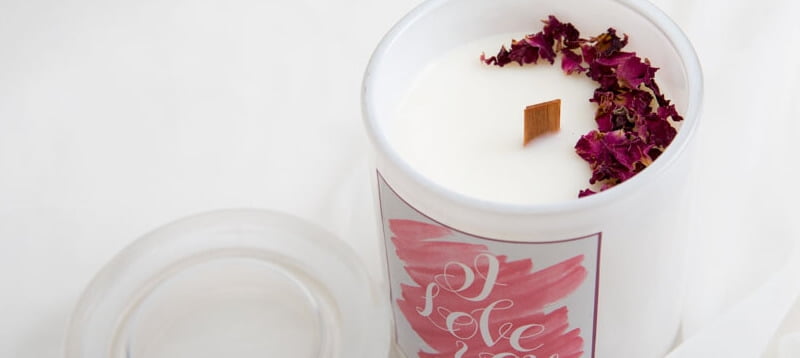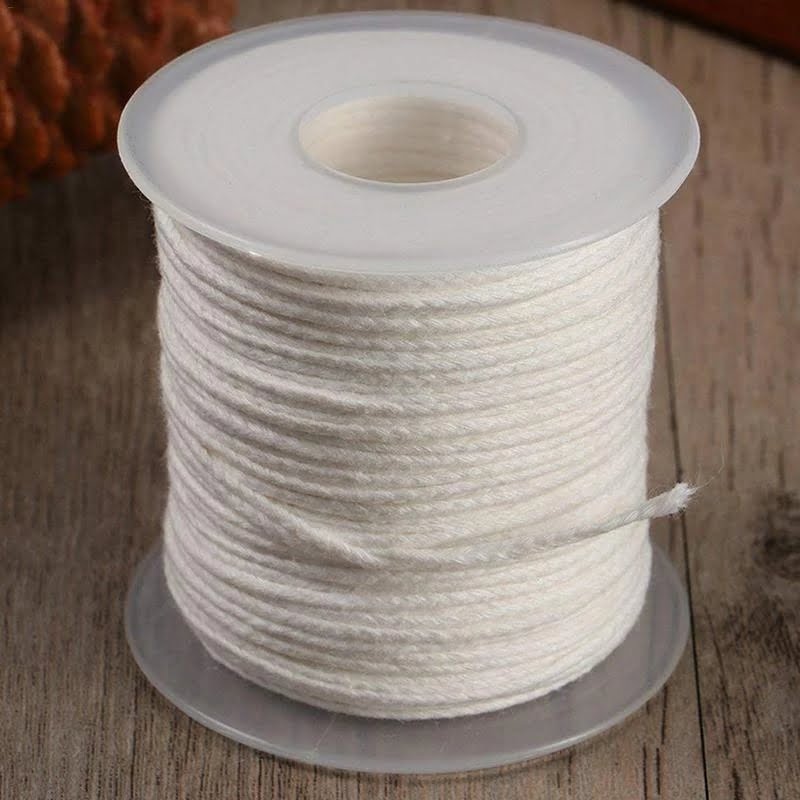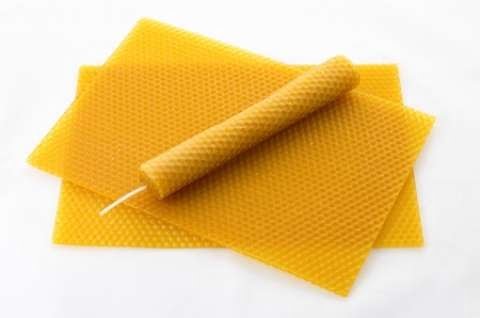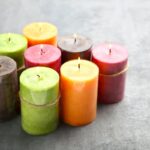Are you interested in learning how to start making your own candles? Candle making is a fun and creative hobby that allows you to customize your own scents and designs. In this article, we will explore the basics of candle making, from gathering essential supplies to understanding different wax and fragrance options. Whether you’re a beginner or looking to improve your candle making skills, this guide will provide you with all the information you need to get started.
To begin your journey into candle making, it’s important to first understand the fundamental aspects of the craft. From selecting the right wax and fragrance to ensuring safety measures are in place, knowing the basics will set a solid foundation for successful candle making. In this section, we will cover everything you need to know about getting started in the world of candle making.
We will delve into gathering essential equipment and materials, choosing the right wax for beginners, creating personalized scents for your candles, and understanding wick options. Additionally, we will also discuss important safety precautions to keep in mind while making candles. So, if you’re ready to embark on an exciting new venture in crafting, read on for an in-depth look at the basics of candle making.
Gathering Your Supplies
When it comes to making your own candles, having the right supplies is crucial for a successful and enjoyable experience. Here’s a list of essential equipment and materials you’ll need to get started:
- Wax: One of the most important components of candle making is the wax. There are several options to choose from, including paraffin, soy, beeswax, and more. Each type of wax has its own advantages and disadvantages, so it’s important to do your research and select the one that best fits your needs.
- Fragrance oils: If you want to add scents to your candles, you’ll need fragrance oils. These come in a wide variety of options, allowing you to create personalized scents for your candles. Just be sure to use oils specifically designed for candle making.
- Wicks: The wick is what provides the fuel for the flame in your candle. Wicks come in different sizes and materials, so it’s important to select the right ones for the type of candle you’re making.
- Containers or molds: Depending on the type of candles you want to make, you’ll need containers or molds. For container candles, look for heat-resistant glass or metal containers. For molded candles, consider silicone or metal molds.
- Melting pot: A melting pot or double boiler will be necessary for melting your wax and mixing in fragrance oils. A dedicated pot will help prevent cross-contamination with food items if using kitchen equipment.
Assembling these basic supplies will provide a solid foundation for how to start making your own candles. Once you have these essentials on hand, you can move on to choosing your wax and fragrance options before beginning the candle making process itself.
Choosing Your Wax
Choosing the right wax is essential when starting to make your own candles. The type of wax you use will greatly affect the quality, burning time, and scent throw of your candles. There are several options available for beginners, each with its own set of pros and cons.
One popular choice for beginners is soy wax, which is derived from soybean oil and known for its clean-burning properties. Soy wax also has a good scent throw, meaning it can effectively carry the fragrance of essential oils or fragrance oils.
Another option is paraffin wax, which is widely used in commercial candle making due to its ability to hold a large amount of fragrance and produce vibrant colors. However, it is important to note that paraffin wax is derived from petroleum, so some may prefer to avoid it for environmental reasons.
Beeswax is another natural option that has a sweet, honey-like aroma and a long burn time. It also has natural air-purifying properties when burned. On the other hand, beeswax can be more expensive and may require special handling due to its high melting point.
As you begin your candle making journey, take the time to research and experiment with different types of wax to find what works best for you. Each type of wax offers its own set of unique qualities and characteristics that will impact the final outcome of your candles. Experimenting with different waxes will not only help you understand their individual properties but also enable you to create personalized candles tailored to your preferences.
To start making your own candles using different types of wax, consider purchasing small quantities until you find the one that best suits your needs. Keep in mind that choosing the right wax is just one aspect of successful candle making; understanding the melting points, pour temperatures, and other specific requirements for each type of wax will be crucial in achieving professional results in your homemade candles.
Selecting Your Fragrance
Now that you have your supplies and wax ready, it’s time to think about the fragrance of your candles. Choosing the right scent is essential for creating personalized and unique candles that suit your preferences or those of your customers. Here are some key steps on how to start making your own candles with the perfect fragrance:
1. Consider the purpose: Before selecting a fragrance, consider the purpose of your candles. Are they meant for relaxation, aromatherapy, or simply to add a pleasant scent to a room? Understanding the purpose will help you narrow down the options and choose a suitable fragrance.
2. Test different scents: It’s important to experiment with different fragrances to find the ones that appeal to you or your target audience. You can create small test batches using various essential oils or fragrance oils to see how they perform when blended with wax.
3. Personalize your scents: Once you’ve found a few favorite scents, consider mixing them together to create unique combinations. This is where you can get creative and develop signature fragrances for your candle line.
4. Consider seasonal variations: Keep in mind that certain scents are more popular during specific seasons. For instance, floral and fruity scents are often preferred in spring and summer, while warm and spicy scents are favored in fall and winter.
By carefully selecting and customizing the fragrances for your candles, you can elevate the overall experience for yourself or your customers.
Understanding Wick Options
When it comes to creating your own candles, understanding wick options is a crucial part of the process. The type of wick you choose will determine how your candle burns and how long it will last. There are several different types of wicks available, each with its own unique characteristics.
One of the most common types of wicks is the cotton wick, which is widely used in candle making. Cotton wicks are known for their clean and slow burn, making them a popular choice for many candle makers. Another option is the wooden wick, which offers a crackling sound when lit and creates a cozy atmosphere. In addition to these, there are also wicks made from different materials such as paper or hemp that can create specific burn characteristics.
When choosing a wick for your candles, it’s important to consider the size and type of candle you are making. Larger candles may require a thicker or multiple wicks to ensure an even burn, while smaller candles may only need a single thin wick. Understanding the burn characteristics of each type of wick will help you make the right choice for your specific candle making project.
To get started in understanding wick options and how to choose the right one for your candles, it’s important to do some research and experimentation. Different types of wax and fragrances can also affect how well a certain type of wick performs. By testing out different combinations, you can find the perfect match for your desired candle burn and scent throw.
| Wick Type | Characteristics |
|---|---|
| Cotton Wicks | Clean and slow burn |
| Wooden Wicks | Creates crackling sound when lit |
| Paper or Hemp Wicks | Offer specific burn characteristics depending on material |
Safety First
When embarking on the journey of making your own candles, it is important to prioritize safety at all times. Working with hot wax and open flames requires caution and care to prevent accidents and ensure a successful candle making experience. This section will cover the essential precautions you need to take to protect yourself and others while making your own candles.
Personal Protective Equipment
Before starting any candle making project, it is crucial to wear appropriate personal protective equipment (PPE). This includes heat-resistant gloves to protect your hands from hot wax, safety goggles to shield your eyes from splashes, and an apron or smock to safeguard your clothing from spills and drips. By wearing the proper PPE, you can minimize the risk of burns and other injuries during the candle making process.
Workspace Safety
Creating a safe workspace is also critical when making candles. Ensure that your work area is clean, well-ventilated, and free from clutter or obstacles that could cause accidents. Keep flammable materials away from heat sources, such as stovetops or hot plates used for melting wax. Additionally, have a fire extinguisher within reach in case of emergencies, and always work on a stable surface to prevent accidental spills or tipping over of equipment.
Fire Safety
Since candle making involves working with open flames, it is important to be mindful of fire safety measures. Keep a close eye on lit candles at all times, never leave them unattended, and place them away from flammable objects or surfaces. It’s also advisable to have a container of water nearby in case of small fires or accidents involving hot wax. By being vigilant about fire safety, you can minimize the risk of potential hazards associated with candle making.
Taking these safety precautions into consideration is essential for anyone learning how to start making their own candles. Prioritizing safety not only protects you during the candle making process but also ensures that you can enjoy this creative craft without worry.
Step-by-Step Guide
Once you have gathered all the necessary supplies and chosen your wax and fragrance, it’s time to start the candle making process. Here is a step-by-step guide on how to start making your own candles:
1. Prepare your workspace: Before you begin, ensure that your work area is clean and free from any clutter. Cover the surface with newspaper or a cloth to protect it from any spills or drips.
2. Melt the wax: Place your chosen wax into a double boiler or a melting pitcher and heat it until it melts completely. Stir the wax occasionally to ensure even melting.
3. Add fragrance: Once the wax has melted, carefully add in your chosen fragrance oil at the recommended temperature for best results. Stir the mixture gently and thoroughly to distribute the scent evenly throughout the wax.
4. Prepare the wick and container: While the scented wax is still liquid, secure the wick at the center of your chosen container using a wick holder or by taping it in place. Make sure the wick is straight and centered to ensure an even burn.
5. Pour the wax: Carefully pour the scented wax into your prepared container, making sure not to spill any outside of it. Leave some space at the top of the container for finishing touches like adding more wax if needed.
6. Let it cool: Allow the candle to cool and harden completely before trimming the wick to about half an inch.
By following these steps, you can get started with making your own candles in no time. Experiment with different fragrances, colors, and containers to create unique and personalized candles that will brighten up any space in your home.
Tips and Tricks
When it comes to successful candle making, there are a few expert tips and tricks that can really elevate your craft. From choosing the right molds to perfecting your pouring technique, there are many factors that can impact the quality of your homemade candles. In this section, we’ll dive into some expert advice to help you create beautiful and long-lasting candles.
Choosing the Right Wicks
One important factor in successful candle making is choosing the right wick for your project. Different wicks burn at different rates and produce different flame sizes, so it’s crucial to select the appropriate wick for the type of wax and fragrance you are using.
Cotton wicks are commonly used for most candle making projects, but there are also eco-friendly options available such as wood or hemp wicks. Researching and experimenting with different types of wicks can make a significant difference in the overall performance of your candles.
Mastering Scent Combinations
Creating personalized scents for your candles is one of the most enjoyable aspects of candle making. However, mastering scent combinations can be a bit tricky. It’s important to start with high-quality fragrance oils and to carefully measure them out according to your recipe. Additionally, understanding how certain scents interact with each other can help you achieve a perfect blend that fills a room with an inviting aroma.
Perfecting Your Pouring Technique
The way you pour your melted wax into the candle mold can significantly affect the appearance and performance of your candles. To avoid air bubbles or uneven surfaces, it’s important to pour the wax slowly and steadily. Some experienced candle makers also recommend preheating the containers and using a heat gun to eliminate any imperfections on the surface of the finished candle.
By incorporating these expert tips and tricks into your candle making process, you’ll have a better chance at creating high-quality, professional-looking candles that you can proudly display or give as gifts to friends and family. Understanding how to start making your own candles is just the beginning; refining your techniques through experimentation and education will allow you to continue growing as a skilled candle maker.
Troubleshooting
When you start making your own candles, it’s important to be aware of the potential issues that can arise during the process. To help you troubleshoot common problems, here are some tips on how to solve them.
One common issue that candle makers encounter is uneven burning. This can happen if the wick is not properly centered or if the candle is placed in a drafty area. To solve this problem, make sure to center the wick before pouring the wax and avoid placing your candles in drafty areas. Additionally, trimming the wick to 1/4 inch before each use can promote even burning.
Another issue that may arise is frosting on the surface of your candles. Frosting often occurs with natural waxes such as soy or beeswax and can affect the appearance of your finished product. To minimize frosting, try pouring your wax at a slightly higher temperature and cooling it gradually to room temperature. You can also experiment with different types of wax additives to reduce frosting.
In addition to these common issues, candle makers may also encounter problems with fragrance throw, tunneling, or adhesion of the wax to the container. By understanding how to identify and address these issues, you can improve your candle making skills and create high-quality products that you can enjoy or share with others. Remember that troubleshooting is a normal part of the learning process, so don’t get discouraged if you encounter challenges along the way.
Conclusion
Candle making is a rewarding and creative hobby that anyone can enjoy. By following the steps outlined in this guide, you can learn how to start making your own candles in no time. From gathering your supplies to understanding the candle making process, you now have all the information you need to begin your candle making journey.
As you take your first steps into candle making, remember to be patient and don’t get discouraged if your first few attempts don’t turn out perfectly. Like any craft, candle making takes practice and experimentation to master. As you become more experienced, don’t be afraid to try new techniques and get creative with different scents and designs for your candles.
To continue expanding your knowledge of candle making, consider joining online communities or attending workshops where you can learn from experienced candle makers and share tips with other enthusiasts. With dedication and a passion for creating beautiful candles, you can develop this hobby into a fulfilling and enjoyable skill that brings joy to yourself and others through the warm glow of homemade candles.
So go ahead, gather your supplies, choose your wax and fragrance, understand the wick options, put safety first, follow our step-by-step guide and start taking those first steps into the world of candle making today.
Frequently Asked Questions
How Do You Start Making Candles for Beginners?
To start making candles for beginners, you’ll need to gather the necessary supplies like wax, wicks, fragrance oils, and a melting pot. Then, choose a candle-making method and follow step-by-step tutorials or classes to learn the process.
How Do You Start Off Making Candles?
Starting off making candles requires researching different types of wax, wicks, and fragrances to understand which ones best fit your desired candle-making style. Additionally, investing in quality equipment and practicing safety measures is essential for a successful start.
How Profitable Is Candle Making?
The profitability of candle making depends on various factors such as production costs, pricing strategy, target market, and business efficiency. With careful planning and marketing efforts, candle making can be a profitable venture especially with the rising demand for unique and high-quality candles.

Welcome to my candle making blog! In this blog, I will be sharing my tips and tricks for making candles. I will also be sharing some of my favorite recipes.





